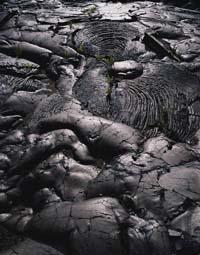The living in the formation of the terrestrial surface

Some Danish geologists pose a surprising hypothesis: the participation of living beings who made photosynthesis in the formation of surface granite. The tests favorable to this hypothesis are scarce, according to other geologists, but explains how the terrestrial surface was formed from a novel point of view.
It is believed that photosynthetic living beings appeared at the same time when the terrestrial surface emerged, about 3,800 million years ago. This data cannot be given of course, since being small and simple, those living beings were hardly fossilized, but there are indications that this is what geologists believe. Therefore they have believed that they influenced the formation of the earth's crust.
This effect lies in the chemical generation of granite. The Earth was chemically very homogeneous when the planet was created and subsequently organized by layers. In this process the basalt moved out, in molten stone. So it has remained in many places on the terrestrial surface, but some geologists believe that basalt became granite elsewhere due to life. During photosynthesis, as living beings transformed solar energy into chemical energy, they accumulated additional energy that helped the chemical transformation of basalt. The path was complex: the basalt became smectyte and clay of the moon, and the tail of the moon helps to form granite.
In short, the hypothesis indicates that living beings acted as energy accumulators and broke the balance that would have existed if life had not appeared. It is a totally innovative hypothesis, but difficult to prove.





